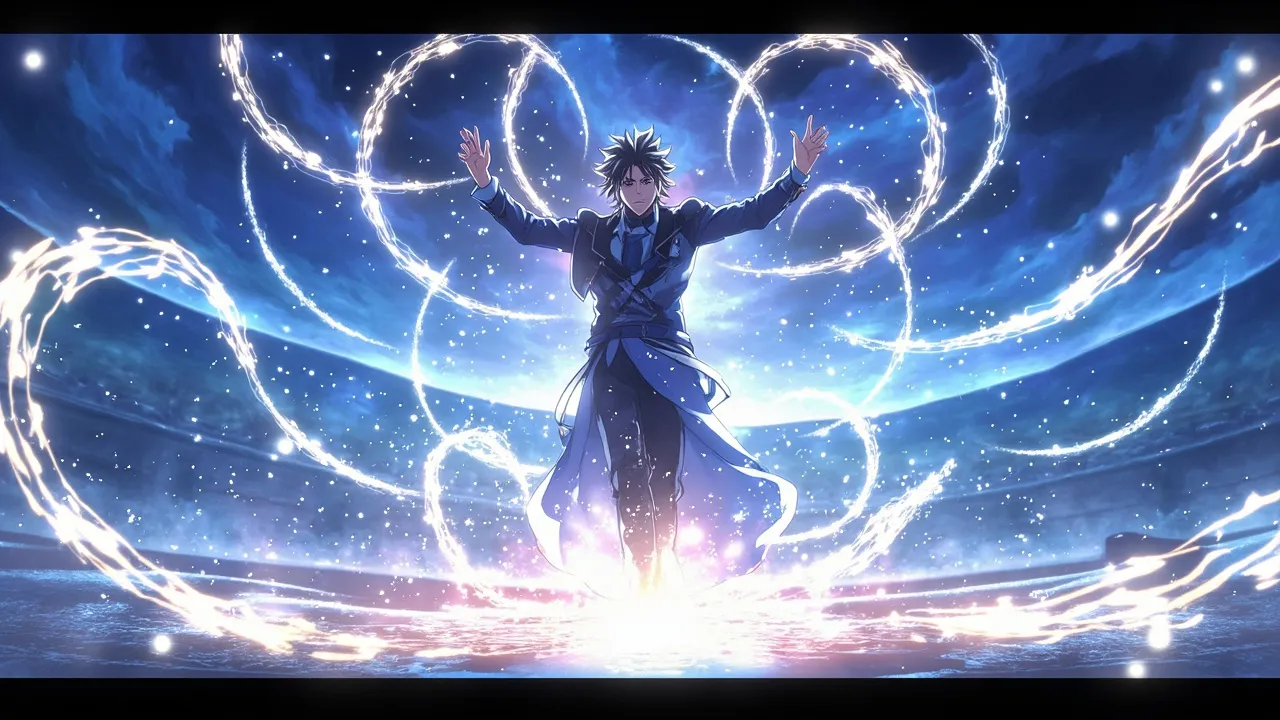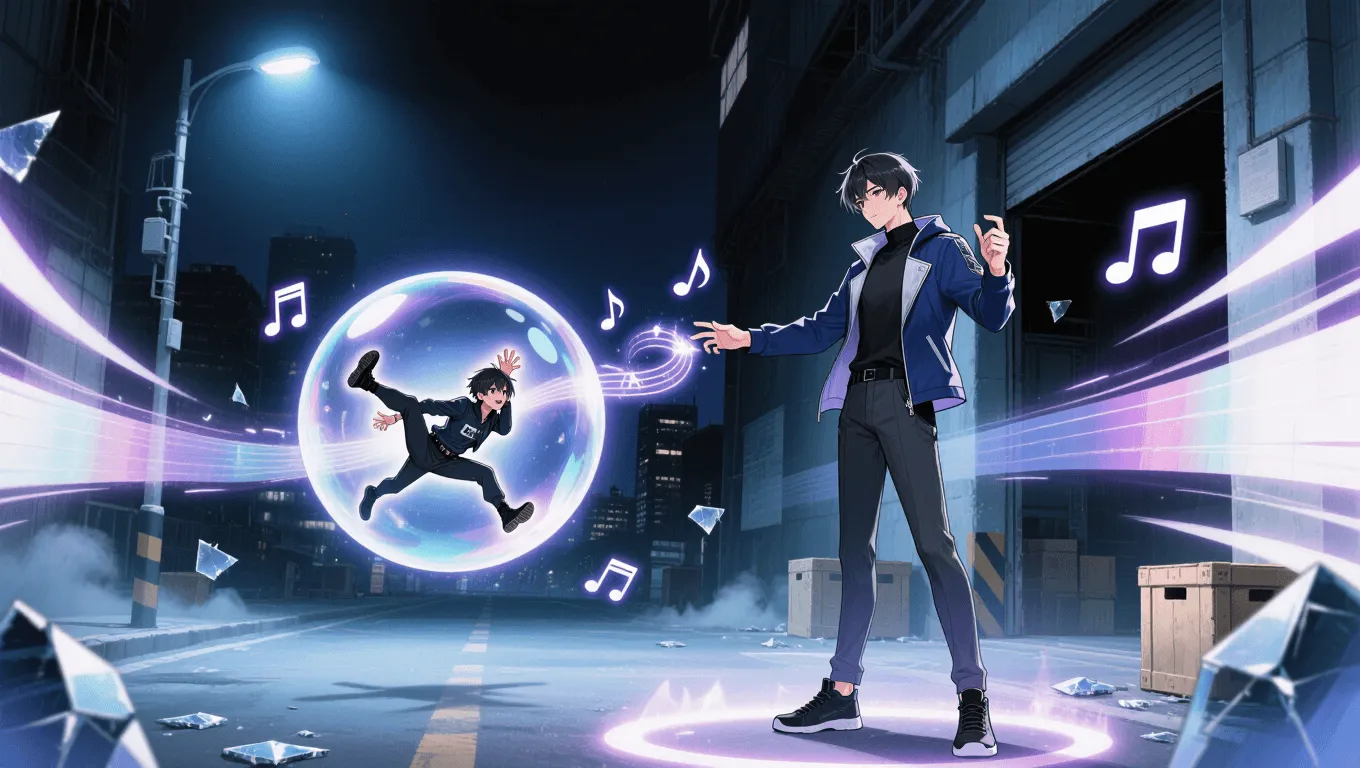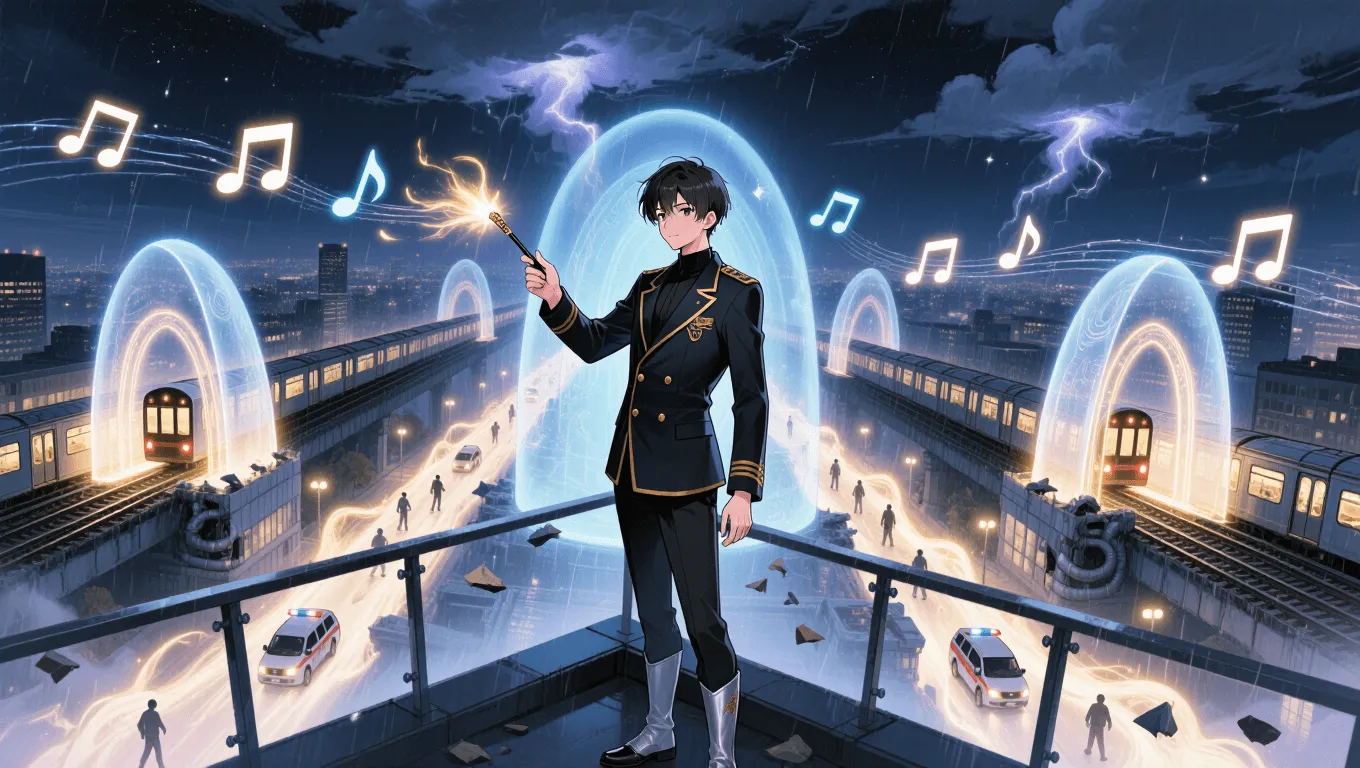Pandora's Symphony

Pandora's Symphony Video Demo 🎬
Table of Contents
- Pandora's Symphony Video Demo 🎬
- What Is Pandora’s Symphony
- Core Abilities of Pandora’s Symphony
- Application / Tactical Advantages in Combat
- Level: Level 1 🏙️, Level 2 🌇, Level 3 🌃
- Limitations of Using the Pandora’s Symphony
- Weakness Against What Other Superpowers
- Synergistic Power Combos
- Known Users
Pandora’s Symphony is a mythic, music-driven superpower that fuses sealing magic with precision sound control. In simple terms, it lets a user compose short melodies—called movements—that lock, unlock, amplify, or redirect forces in the world. By conducting audible or vibration-based “scores,” the wielder commands resonance, binds threats, and releases curated bursts of power. This article explains what Pandora’s Symphony is, how it works, and how it compares with other abilities in the broader list of superpowers. If readers want fresh inspiration, try the random superpower generator to discover new combos.
What Is Pandora’s Symphony
Pandora’s Symphony is a music-based reality interface. Each note, chord, and rhythm carries an instruction to the world: seal a phenomenon, magnify an emotion, harden air into a barrier, hush a battlefield, or “open the box” in a controlled way. Think of it as audiokinesis, resonance manipulation, and ritual magic blended into one disciplined art.
At its heart is the paradox of Pandora: unlocking chaos without being consumed by it. The user channels potential—fear, flame, kinetic energy, even lingering curses—then scores it into a safe arrangement. A brief phrase might tether a rampaging golem, while a grand crescendo could purge a hex from an entire district. The more complex the composition, the deeper the control.
Core Abilities of Pandora’s Symphony
Harmonic Sealing
A signature technique that binds targets or phenomena into “measures.” The user hums or plays a pattern that wraps like chains of sound, immobilizing foes, suppressing powers, or shelving environmental hazards (toxic gas, wildfires, unstable rifts). This is the “lock” side of the Symphony.
Crescendo Release
The converse of sealing. Stored energies or contained status effects can be released with a new refrain, turning bottled lightning into directed force. The release can manifest as a precise kinetic pulse, a purifying wave, or a zone-wide buff. Practitioners learn to convert hostile curses into healing cadences, making “disaster recycling” a tactical hallmark.
Aural Constructs
By layering overtones, the user shapes barriers, bridges, and blades from pressurized sound. These constructs function like hard light but are made of densely woven waveforms. Shields hum at a set frequency to deflect projectiles; platforms vibrate to carry allies across gaps.
Status Orchestration (Buffs & Debuffs)
Short motifs can quicken reflexes, steady morale, or blur the user’s outline into a mirage. Conversely, dissonant figures impose slowness, vertigo, or misfires on enemies. This suite overlaps with enchantment and empathic modulation but remains rooted in physics-informed psychoacoustics rather than pure mind control.
Tempo Shifts
Minor time-feel adjustments (not full time travel): speeding allied movements by manipulating perceived rhythm windows or stalling an enemy’s timing. In practice, this looks like slipping between beats—perfect for counters, vanishes, and feints.
Echo Archives
Sound retains memory. By sampling ambient resonance, the user can replay audio ghosts of recent events, aiding reconnaissance. Advanced conductors extract emotional “color” from echoes to gauge crowd fear, hope, or deception.
Anti-Sound Veil
A localized mute field that cancels vibrations. Useful for stealth, bomb defusal, or silencing sonic-based opponents. The veil costs sustained focus and reduces access to some offensive constructs while active.
Conductor’s Focus
Most users channel through an instrument or conduit: baton, tuning fork, thread-harp, or even fingertip snaps. The focus improves precision, range, and the number of simultaneous parts the user can “hold” in play.
Application / Tactical Advantages in Combat
Battlefield Control
Pandora’s Symphony excels at shaping engagements. Harmonic seals pin priority targets; aural walls funnel enemies into chokepoints; anti-sound veils neutralize alarms and sonic weapons. The user rewrites the terrain’s “acoustics” to favor the team.
Crowd Management and Non-Lethal Options
Dissonant fogs induce harmless disorientation, while lullaby motifs calm hostile mobs. Because many effects are tunable, collateral damage stays low—ideal for rescue operations and urban defense.
Turn Enemies’ Power Against Them
A curse, rage aura, or explosive kinetic field can be sealed, re-scored, and re-released as a purifying pulse or ally buff. This counters typical “damage sponges” and chaos casters who rely on overwhelming output.
Precision Synergy
The power syncs with marksmen, martial artists, and stealth specialists. Tempo shifts create openings for decisive strikes; resonance pings provide live sonar; sound bridges enable vertical flanking without exposure.
Psychological Edge
The visible “music” of constructs—shimmering staff lines in the air, rippling chords—intimidates and unsettles foes. Meanwhile, allies hear invigorating motifs that steady breathing and sharpen focus.
Level: Level 1 🏙️, Level 2 🌇, Level 3 🌃
Level 1 🏙️ — Street Virtuoso

-
Range & Scale: Room to warehouse scale; line-of-sight preferred.
-
Toolkit: Basic harmonic sealing on single targets, short-lived sound shields, simple buffs (steadier hands, faster step), brief disorientation debuffs, low-radius mute bubble.
-
Playstyle: Reactive control. Neutralize one high-value threat, create cover, and buy time. Echo Archives work within minutes of an event and only capture coarse detail.
-
Risks: Overuse leads to ear fatigue—ringing, headache, and imprecise pitch (which weakens seals).
Level 2 🌇 — City Conductor

-
Range & Scale: City block to district scale; partial effect through walls with trained listening.
-
Toolkit: Multi-target sealing, layered barriers, rhythm-based counters that preempt attacks, mid-strength Crescendo Releases (e.g., kinetic pulses that clear avenues), stable mute fields, emotional color mapping in Echo Archives.
-
Playstyle: Proactive shaping. The user sets tempo for the entire engagement, redirecting enemy formations and supplying rolling buffs to allies.
-
Risks: Complex scores generate “resonance debt.” If not resolved with a clean cadence, minor misfires occur—constructs drift off-key, buffs decay early, or a sealed hazard leaks.
Level 3 🌃 — Grand Maestro

-
Range & Scale: Districts to citywide events; can lace effects through infrastructure (subways, glass façades, water mains) as passive resonators.
-
Toolkit: Area-wide seals (storms, riot frenzies, rift instabilities), symphonic releases that convert mass peril into coordinated healing or evacuation vectors, construct architecture (cathedral-scale barriers, acoustic domes), finely tuned tempo shifts that feel like brief bullet-time windows for the team.
-
Playstyle: Strategic metamusic. The user writes the soundtrack of the operation, turning chaos into choreography.
-
Risks: Grand scores strain body and psyche. A failed coda can “open the box” uncontrollably, releasing misaligned energies or collapsing constructs into shockwaves.
Limitations of Using the Pandora’s Symphony
-
Medium Dependence: Effects need a vibration pathway—air, water, or structure. In perfect vacuum or with aggressive vibration damping, the power loses reach and bite.
-
Audibility & Focus: While not every effect must be loud, the user must maintain rhythmic precision. Gagging, severe hearing loss mid-fight, or forced syncopation can break patterns.
-
Cognitive Load: Managing many parts at once taxes working memory. Complex polyrhythms raise power ceiling but invite mistakes if the user is exhausted or distracted.
-
Instrument Reliance: A broken conduit (baton, tuning fork, gloves) reduces accuracy and complexity until replaced or repaired.
-
Resonance Debt: High-tier compositions leave lingering harmonic stress that needs a resolving cadence; skipping resolution invites glitches or small backfires.
-
Friendly Fire Potential: Misaligned buffs can entrain allies into unwanted tempos (overextension, premature charges). Seals placed carelessly may block medics or exits.
-
Ethical Boundaries: Emotion-shaping motifs can toe the line of consent. Responsible users restrict themselves to calming panic or steadying focus, not overriding will.
Weakness Against What Other Superpowers
-
Silence/Null-Sound Fields: Dedicated sonokinesis nullifiers or anti-vibration domes blunt nearly every technique by absorbing or scattering waveforms.
-
Vibration Dampening & Density Control: Powers that thicken air, freeze surfaces, or impose foam-like damping reduce range and durability of constructs.
-
Electromagnetic Scramble: EM disruptors that jitter instruments or induce nerve micro-spasms ruin fine timing.
-
Hyper-Speed Interference: Speedsters who strobe around the user can desync ongoing rhythms, forcing shorter, simpler patterns.
-
Chaos/Entropy Magic: Randomization of pitch relationships unthreads seals unless the conductor can re-harmonize on the fly.
-
Telepathy with Anti-Entrancement: Mental fortresses and anti-suggestion training cut down the effectiveness of morale and focus motifs.
-
Terrain Shapers: Seismokinesis or terrain liquefaction re-tunes the battlefield’s resonators (pipes, walls, pools), distorting pre-laid scores.
Synergistic Power Combos
-
Gravity or Force Shaping: Compress sound paths into tighter beams, turning aural constructs into scalpel-grade tools; stabilize city-scale domes by anchoring them to gravity wells.
-
Aerokinesis & Hydrokinesis: Sculpt air or water currents into waveguides for longer-range sealing and clearer Crescendo Releases.
-
Photokinesis & Illusion Craft: Pair chord progressions with light patterns for potent misdirection—aural-visual illusions are harder to parse.
-
Telekinesis: Hold instruments in independent orbits, conducting multi-part scores without overtaxing limbs; pin enemies while seals set.
-
Healing & Biokinesis: Use Crescendo Releases to purge toxins while partners accelerate recovery, creating safe “reset” zones mid-fight.
-
Technopathy: Co-opt PA systems, drone swarms, and architectural acoustics; embed subroutines in smart materials that “remember” cadences for delayed activation.
-
Precognition/Micro-Foresight: Knowing when an attack will land lets the user place perfect counter-rhythms, multiplying efficiency.
Known Users
-
The Archivist-Conductor: A scholar-hero who cataloged city acoustics, mapping which bridges, tunnels, and atriums resonate best. Known for mass-evacuation crescendos during disaster response.
-
The Luthier of Echoes: A vigilante who hides seals inside buskers’ tunes, staging surprise safe zones that snap into barriers when needed.
-
Analogues in Popular Media: While not wielders of Pandora’s Symphony specifically, characters with adjacent skill sets help visualize aspects of the power. For instance, Dazzler transforms sound into light and energy, showcasing creative outcomes of sound-based abilities; and DC’s Music Meister demonstrates mind-leaning, music-driven influence in some adaptations.
These examples illustrate how music-centric powers can scale from personal defense to city-shaping control, highlighting the promise—and peril—of conducting the world through resonance.
